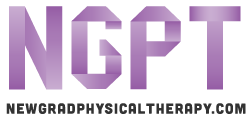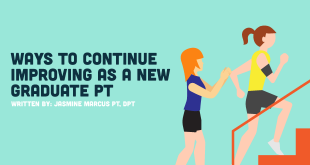How much time should I spend on my physical therapy resume?
When you’re first crafting your resume, you should spend as long as it takes to make your resume feel professional. For some people, this takes a few hours. For others, it takes days, or even weeks. DO NOT RUSH THE PROCESS. Your resume is a reflection of your accomplishments and attention to detail.
After all the hard your put into your education, don’t let a sloppy or poorly worded resume rob you of opportunities.
How long should my resume be?
While there’s no set limit on the length of your resume, try to keep it to two pages, at least as a new grad. You can certainly fit what you need to say in this length, and it won’t come across as pompous or unnecessarily long.
How specific do I need to get for each physical therapy job application?
Just like your cover letter, your resume really should be tailored to each and every job for which you apply. You don’t have to completely redo it each time, but taking an hour to customize your job application will make you stand out to your employers, and let them see that you go the extra mile to pay attention to details.
If an employer is going to hire a newly minted physical therapist, they need to see that you don’t make mistakes with documentation, so make sure to look at your resume a few time to check for errors (have a friend look, too!) Simple mistakes like forgetting a period will stick out in employers’ minds, and cause them to question whether you will be sloppy with your paperwork.
Should I use graphics on my resume?
Do not put too many heavy graphics in your resume, but there is something to be said for that little something extra. Don’t use graphics if you’re applying via a clunky online system for a large hospital.
If you wish to apply for a hip outpatient clinic, feel free to use a few graphics, save as a PDF and send away! Yoga and wellness studios will appreciate the ability to create an aesthetic touch, since they rely much more on an online presence (re: tech savviness) for customers.
What format should I use?
ALWAYS use the format specified by the job posting. If none is specified, try to save your resume in a version of MS Word older than the most recent, in case the clinic director has an old version of MS Word. If you’re applying to a hospital, make sure to use an MS Word doc, too.
Some larger hospital systems use robots to crawl your resume for keywords, and they may not be able to access the information if you send them a PDF.
Does it matter what font I choose?
Absolutely! Like your choice of clothing or language, the typeface on your resume reflects your overall image. Remember that certain fonts convey a sophisticated and confident image, while others indicate that you don’t “keep up with the times” (I’m looking at you, Comic Sans.) This interesting article on NPR.com discusses the impact various fonts can have on your resume.
Do I include my previous career experience?
This depends. If you’re savvy with computers, why not!? If you worked at a strip club, probably not 😀 Use your judgment.
Only include relevant roles at that job, and try to tailor what you did in a way to illustrate how you can help in your new role.
For example, if you stated that you utilized javascript to create dynamic user interfaces for legal CMS portals, a clinic director’s eyes might glaze over. But if you highlighted that you “utilized web technologies to effectively communicate legal content,” a clinic director could translate that to ways that you could help manage the website when the webmaster goes on vacation.
Do I need a cover letter?
Absolutely. Submitting a tailored resume without a thoughtful, well-crafted cover letter is like upholstering a porche with cheesecloth.
 NewGradPhysicalTherapy.com The Largest Online Resource For New Grad Physical Therapists
NewGradPhysicalTherapy.com The Largest Online Resource For New Grad Physical Therapists







One comment
Pingback: Create an Eye-Catching Resume | NewGradPhysicalTherapy